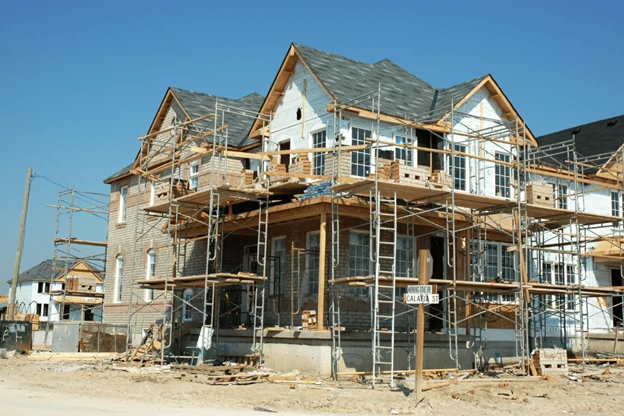Building a new home is one of life’s most exciting milestones – but it’s also a complex process that involves planning, patience, and coordination. In Florida, home construction comes with its own unique challenges and considerations, from the humid climate to hurricane-resistant building codes. Whether you’re breaking ground on your dream coastal home or expanding a property inland, understanding what to expect during each stage of construction can help you stay confident and in control.
Here’s a complete breakdown of what to expect during a home construction project in Florida – from planning and permitting to finishing touches – with the guidance of a trusted home contractor to ensure everything runs smoothly.
1. The Planning and Design Phase
Before any soil is turned, your journey begins with planning and design. This stage is crucial because it sets the entire project’s direction. You’ll work with architects, designers, and contractors to translate your vision into blueprints.
In Florida, local factors such as lot elevation, drainage, and hurricane risk play a major role in design. Your architect will consider wind zones, floodplains, and energy efficiency standards when creating the plans. At this stage, you’ll also decide on home size, layout, materials, and special features like outdoor living spaces or pools — both popular in Florida homes.
Expect several rounds of revisions as you balance aesthetics, budget, and practicality. It’s also a good time to research local builders with strong reputations for reliability and code compliance.
2. Permits and Approvals
Florida has strict construction regulations due to its climate and coastal risks. Once your design is finalized, your contractor will apply for the necessary permits from the local building department. These often include:
- Building permits
- Electrical, plumbing, and HVAC permits
- Environmental and stormwater management approvals
Depending on the city or county, this process can take several weeks or even months. Patience is key here — rushing the permit stage can lead to costly fines or delays later. A good contractor will handle this process efficiently and keep you informed about progress.
3. Site Preparation and Foundation
Once permits are approved, the exciting part begins – site preparation. This includes clearing vegetation, grading the land, and setting up temporary utilities. In Florida, where sandy soil and a high water table are common, proper grading and drainage are essential to prevent flooding issues.
After the site is ready, the foundation work begins. Most Florida homes are built on concrete slabs, but some coastal properties may require pilings or raised foundations to protect against flooding. This phase involves pouring concrete, setting rebar, and ensuring the foundation is level and strong. Inspections are usually required before moving forward.
4. Framing and Structure
Once the foundation has cured, the framing begins – this is when your home starts to take shape. Walls, floors, and the roof structure are built using wood or steel framing. You’ll finally see the outline of your rooms, doorways, and windows.
In Florida, builders use specific materials and techniques designed to withstand humidity and high winds. Hurricane straps, impact-resistant windows, and reinforced roof systems are standard in most new builds. During this phase, the home’s skeleton is inspected for structural integrity before moving to the next stage.
5. Systems Installation (Plumbing, Electrical, HVAC)
After framing, subcontractors begin installing the essential systems: plumbing, electrical wiring, and HVAC ducts. This is a crucial step that requires careful coordination between multiple trades.
Because Florida’s climate is hot and humid, HVAC system design is especially important. Properly sized and installed systems can help control indoor humidity, improve comfort, and lower energy bills. Inspections are typically required for each system before walls are closed up.
6. Insulation and Drywall
Next comes insulation — vital for energy efficiency in Florida’s warm climate. Builders often use foam or fiberglass insulation to help keep your home cool and reduce energy costs. After insulation passes inspection, drywall is installed, taped, and finished to create smooth interior walls.
At this stage, you’ll begin to get a feel for the interior layout and room sizes. You might also start finalizing finishes such as paint colors, cabinetry, and flooring choices.
7. Interior Finishes and Exterior Work
Once drywall is complete, your home starts looking more “real.” Crews install flooring, cabinetry, countertops, and fixtures. Painters give walls their first coat, and electricians and plumbers return to install outlets, lights, and faucets.
Outside, workers finish stucco or siding, paint the exterior, and add driveways, walkways, or patios. Landscaping typically happens near the end of the project when heavy equipment is no longer needed.
8. Final Inspections and Walkthrough
Before you move in, the home must pass a series of final inspections to ensure it meets all Florida building codes and safety standards. Your contractor will schedule these with the local authorities.
Once approved, you’ll do a final walkthrough with your builder to identify any last-minute touch-ups or minor issues – known as a “punch list.”
9. Move-In and Warranty Period
After receiving your certificate of occupancy, you’re ready to move into your brand-new Florida home. Many builders offer a warranty period (usually one year) that covers any issues like settling cracks or minor repairs. Keep track of any concerns and communicate them with your contractor during this time.
Read the article: Landscaping
Final Thoughts
Building a home in Florida is an exciting journey that blends creativity, craftsmanship, and careful planning. While it can be a lengthy process – often taking 8 to 14 months from design to completion – the results are worth it. With the right contractor, clear communication, and an understanding of what to expect, you can turn your vision into a durable, comfortable, and beautiful Florida home built to last through sunshine and storms alike.

